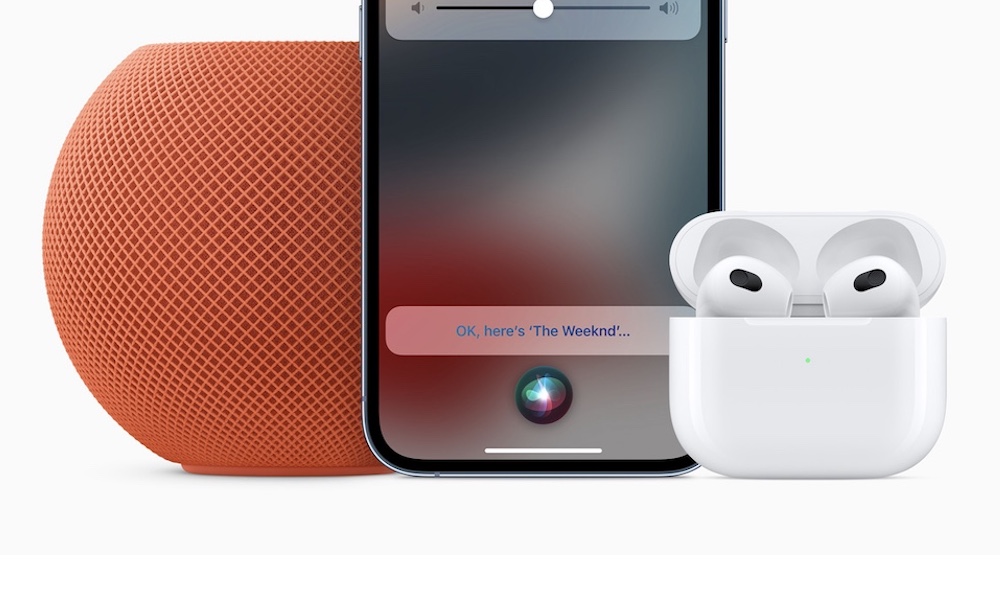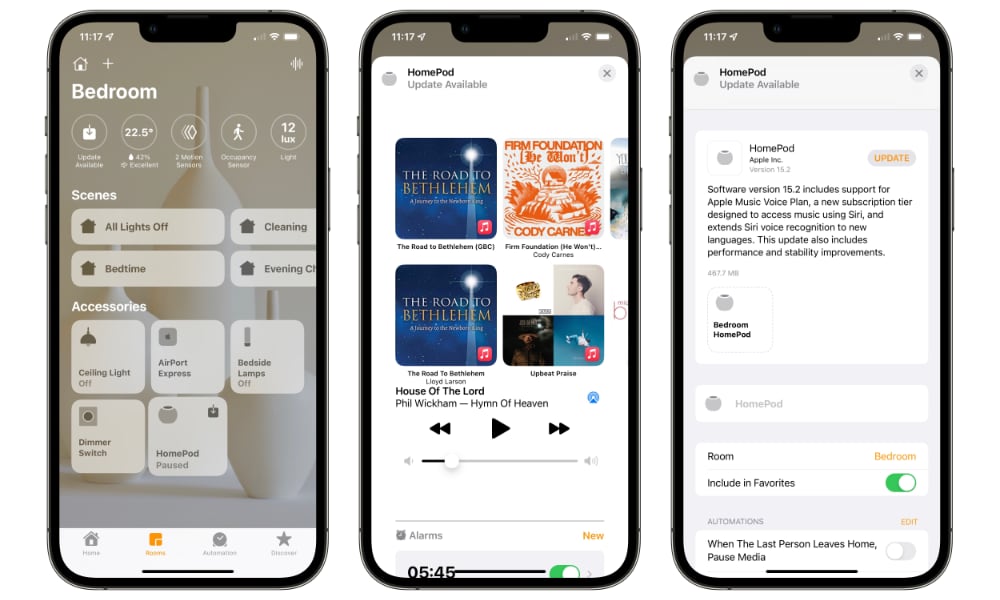HomePod Software 15.2 Adds Apple Music Voice Support (and More) | Here’s How to Get It
 Credit: Apple
Credit: Apple
Toggle Dark Mode
Alongside Monday’s public release of iOS 15.2, Apple has begun rolling out a corresponding HomePod Software to bring its smart speakers in line with the new features unveiled for the iPhone, iPad, and Mac.
Most notably, iOS/iPadOS 15.2 and macOS 12.1 add support for the new Apple Music Voice Plan, a $4.99 Siri-only tier of Apple’s streaming music service that puts the entire catalog of 90 million tracks only a voice request away.
With HomePod Software 15.2, this new voice plan is also now available on both the HomePod mini and the original full-sized HomePod — the places where a voice-only Apple Music plan would be most at home.
Apple Music Voice Plan
To be clear, the new Apple Music Voice Plan has a few limitations, meaning it’s not for everybody. For example, you won’t get Spatial Audio with Dolby Atmos, Lossless Audio, lyrics, music videos, or even support for your own iCloud Music Library. In fact, the Music app in iOS/iPadOS 15.2 and macOS 12.1 will present a simplified interface that directs you to make all of your requests by voice.
When using the Apple Music Voice Plan, there’s no “For You” section, and you won’t be able to browse through Apple Music. Instead, if you want to find a specific song or album, you’ll need to call it up using Siri. Apple has made this a bit more practical, however, since Apple Music now includes over 250 mood and activity playlists, letting you easily call up appropriate music for just about any occasion, whether that’s a Christmas party, a bottomless brunch, or just something for hitting the books.
Since the Apple Music Voice Plan doesn’t support iCloud Music Library, it also won’t let you listen to your own personal tracks or playlists on your HomePod. To do that, you’ll either need to pony up $9.99/month for the full individual Apple Music plan (or get it as part of an Apple One bundle) or simply AirPlay it to your HomePod from another device.
Note that the Apple Music voice plan won’t prevent you from loading your own music library directly onto your iPhone or iPad using the macOS Music app (or iTunes in the case of Windows older macOS versions). After all, you can do that even if you don’t subscribe to any Apple services at all.
However, these don’t get uploaded to iCloud unless you have a standard Apple Music plan, so you won’t be able to call them up directly with Siri on your HomePod. To be fair, this isn’t a huge problem unless you have a particularly eclectic music collection that can’t be found on Apple Music.
More Languages
While the marquee feature of HomePod Software 15.2 is support for the new Apple Music Voice Plan, the update also brings support for talking to Siri in Dutch and Russian.
Although Siri has long understood these languages — and many more — on the iPhone and iPad, the HomePod only supports Siri in the countries where it’s actually sold. This suggests that the HomePod mini will soon be making its debut in Russia and the Netherlands.
How to Install HomePod Software 15.2
By default, your HomePods should automatically update to the latest software in the background, but if you want to check on their status and perhaps hurry the process along, you can do so through the Home app on your iPhone or iPad:
- Open the Home app.
- In the top-left corner, tap the house icon.
- Tap Home Settings.
- Scroll down, if necessary, and tap Software Update.
- Tap the Update All button to start updating all the HomePod devices on your home network.
You can also update your HomePods individually through the Home app:
- In the Home app, locate the HomePod you want to update.
- Long press on the HomePod button to bring up its details.
- Scroll down to the settings below the Timers section.
- The software update info will appear at the top if an update is available. Tap the Update button to install it.
In either case, the updates will be downloaded and installed directly to your HomePods in the background, so you can close the Home app once you’ve initiated the updates, and you don’t need to keep your iPhone nearby, either.









